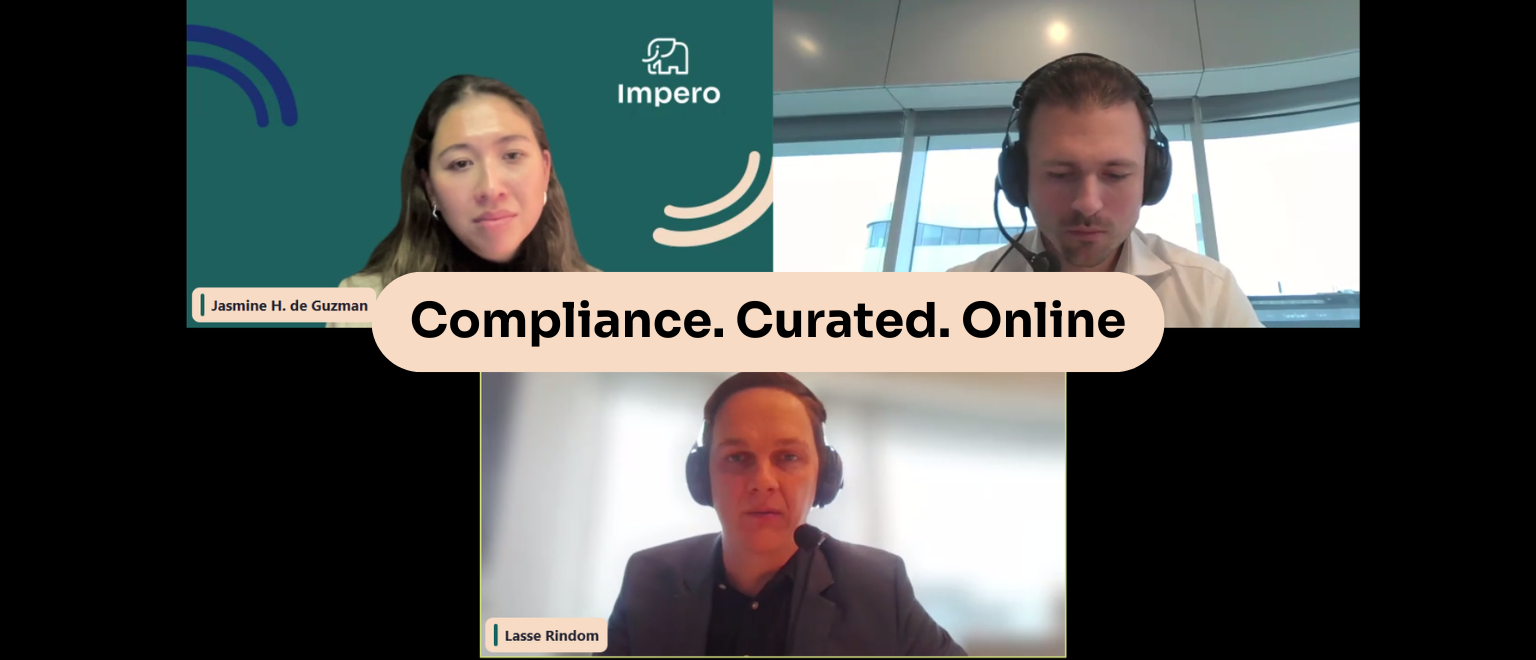
Risk Management vs Risk Documentation: How to Build a Stronger Compliance Framework
In the world of governance, risk, and compliance (GRC), terms like "risk management" and "risk documentation" are often used interchangeably. But there’s a crucial distinction between the two—and understanding it can mean the difference between checking a box and actively protecting your organization.
Documentation is important. You need clear records of what risks you’ve identified, what controls are in place, and how they’re performing. But documentation alone isn’t risk management. Without active ownership, oversight, and escalation, documentation becomes stale—and so does your control environment.
In this blog, we’ll clarify the difference between risk management and risk documentation, explore why both are essential for compliance, and show how an internal control system platform like Impero helps you connect the dots.
What Is Risk Management?
Risk management is the proactive process of identifying, assessing, mitigating, and monitoring risks that could impact your organization’s objectives. It’s not a one-off activity—it’s an ongoing cycle that requires engagement from stakeholders across the business.
Risk management involves:
- Identifying potential risks, both internal and external
- Assessing risk severity, based on likelihood and impact
- Designing and implementing controls to mitigate those risks
- Monitoring control effectiveness over time
- Escalating or re-assessing risks as conditions change
- Aligning with compliance frameworks and regulatory expectations
Done right, risk management becomes embedded in daily operations—from financial reporting and IT security to supply chain decisions and third-party relationships. It empowers leaders to make informed decisions, allocate resources wisely, and build organizational resilience.
Note: True risk management is forward-looking. It’s about anticipating what could go wrong—and putting mechanisms in place to either prevent it or limit its impact.
What Is Risk Documentation?
Risk documentation, on the other hand, is the structured recording of your risk management activities. It captures what’s been identified, what controls exist, who owns them, how they’re tested, and what the results are.
It serves as the evidence that your risk management process is working. It’s what auditors review. It’s what boards expect. And it’s increasingly required by regulators.
Examples of risk documentation include:
- A centralized risk register
- Descriptions of controls linked to risks
- Policies and procedures tied to control activities
- Evidence of control testing and sign-offs
- Records of remediation efforts and escalations
- Audit trails that show who did what, when, and why
Without documentation, you can't demonstrate that risks are being managed—or prove it during an audit or compliance review.
Reminder: Risk documentation is a snapshot of your control environment. But it’s only as strong as the process behind it.

Why the Difference Matters
Many organizations treat risk documentation as risk management. They create detailed spreadsheets. They log risks in databases. They store policies in SharePoint folders.But if those risks aren’t being actively monitored, tested, or updated—then nothing is truly being managed.
Here’s why the difference matters:
1. Regulators Expect Active Oversight
Regulatory frameworks increasingly focus on how risks are managed, not just how they’re recorded.
Take the UK Corporate Governance Code, for example. Its updated Provision 29 requires boards to not only confirm the effectiveness of their risk management and internal control systems—but to describe how they monitor and review that effectiveness over time.
That requires more than a spreadsheet. It requires active engagement and continuous review.
2. Audit Readiness Demands Traceability
Auditors want proof that your risk process is consistent, timely, and effective. That means:
- Controls have clear owners
- Tasks are performed and evidenced on schedule
- Issues are logged and addressed
- Changes are tracked transparently
If your documentation doesn't reflect actual activity, it weakens your audit trail—and your credibility.
3. Compliance Without Action Is Compliance Theater
When risk documentation is created to “tick a box” rather than guide action, it becomes disconnected from real business decisions. That’s not risk management. That’s compliance theater.
The goal of GRC is not to generate documents. It’s to create a control environment that works—and evolves—with your business.
4. People Manage Risk—Not Files
Risk management requires action from people across the business. It needs workflows, reminders, checklists, and clear accountability. A static list of risks doesn’t prompt behavior. A documented control doesn’t test itself. For risks to be managed, tasks must be assigned, completed, and verified.
How Impero Bridges the Gap
Impero is built to help organizations go beyond risk documentation—and turn risk management into a living, operational process.
Here’s how:
Assign Clear Ownership: Controls aren’t just documented in Impero—they’re owned. You can assign tasks to specific individuals, so everyone knows who’s responsible for what, and when.
Automate Recurring Control Tasks: Scheduled tasks and reminders ensure that controls are tested regularly, not just during annual audits. That creates rhythm, discipline, and consistency.
Capture Real-Time Results: Whether a control is performed, skipped, or escalated—Impero captures it all in real time. You get an up-to-date view of your risk posture, not a retrospective report.
Enable Complete Traceability: Every task, comment, and piece of evidence is logged. That means your documentation isn’t just complete—it’s audit-ready. You can show what happened, who did it, and what actions were taken as a result.
Support Regulatory Compliance: From Provision 29 to SOX, Impero provides the structure and visibility needed to demonstrate compliance—with flexibility to adapt to your unique risk landscape.
Closing the Gap: From Paper to Practice
Risk documentation is important. It gives you structure, transparency, and accountability. But without real action, it’s just paper—or pixels.
Risk management, on the other hand, turns that structure into a safeguard. It ensures that the right people are doing the right things at the right time—supported by clear evidence and oversight.
In today’s regulatory environment, and with increasing board-level scrutiny, organizations can’t afford to treat documentation as a substitute for management.
Ready to Move Beyond the Spreadsheet?
Impero helps organizations like yours embed risk management into daily operations—while maintaining the documentation you need to stay compliant and in control.
- Assign ownership
- Automate testing
- Monitor control health in real time
- Create an audit-ready record of compliance
Don’t just document risk. Manage it.
Get started with Impero today.
Get the latest from Impero in your inbox.
Stay informed on all things Impero — webinar & event invites, exclusive content, product launches, and more! Or let us show you why Impero is the right choice for your risk and compliance needs.

You might also like...
Explore insights, product updates, and practical guidance to navigate the world of risk & internal controls.

Insights & Inspiration
AI in Financial Compliance and Controlling: Key Takeaways from Our Latest Webinar

Insights & Inspiration
Why Impero Is the Ideal Platform for Delivering Provision 29 Compliance

Insights & Inspiration









